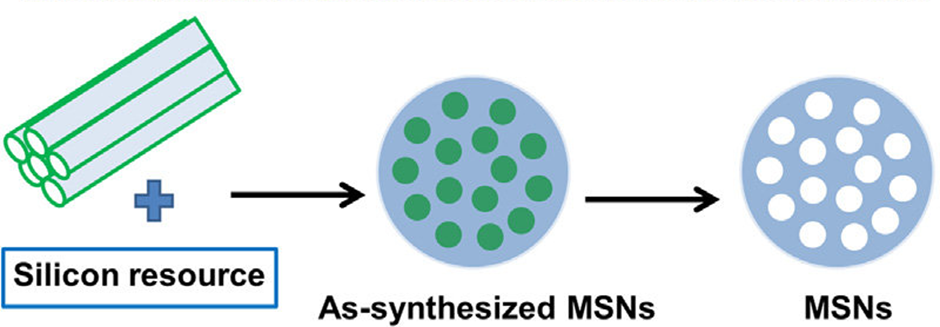Nanotechnology has become a driving force in modern medicine, offering solutions that go beyond the limitations of conventional therapeutics. Nanomaterials bring multiple advantages to the table, including precise delivery of substances, improved formulation stability, and the ability to control how drugs are released over time.
For a nanocarrier to be effective, it should combine several key features:

Nanocarrier is illustrated as logistic cargo
Among the many nanomaterials studied, porous inorganic materials have gained increasing attention. Their high surface area, customizable surface chemistry, and superior stability across biological barriers make them strong candidates compared to traditional organic carriers such as polymers and liposomes.
One standout option is silica-based nanoparticles (SNPs). They are attractive because of their ease of synthesis, tunable size, excellent colloidal stability, and versatile surface modifications. SNPs also offer scalability for production, making them practical for real-world applications.
Importantly, SNPs have been shown to preserve the chemical and physical functions of a wide range of therapeutic cargos while improving their stability. This positions them as one of the most promising nanotechnology platforms in the future of drug delivery.
Silica nanoparticles (SiNPs) are tiny particles made of silicon dioxide (SiO₂), the same material found in sand, quartz, and glass. Their size usually ranges from 1 to 100 nanometers (nm). To put this in perspective, a human hair is about 80,000 to 100,000 nm in diameter. At this scale, SiNPs display unique properties because of their extremely high surface area relative to their volume.
SiNPs can be engineered in several forms:
Structurally, they can be amorphous (non-crystalline) or crystalline. Amorphous silica is the most common and is generally considered biocompatible, making it useful for biomedical applications. In contrast, crystalline forms are less desirable because larger crystalline silica particles have been linked to health risks such as silicosis.
What makes SiNPs especially versatile is their surface chemistry. Their surface is rich in silanol (-OH) groups, which can be easily modified with functional groups like amines, carboxyls, or polymers such as PEG. This functionalization enhances solubility, stability, and the ability to target specific biological environments.
Thanks to this unique combination of biocompatibility, tunable structure, and adaptable surface chemistry, silica nanoparticles are emerging as powerful tools in drug delivery, diagnostics, and other biomedical applications.

Mesoporous silica nanoparticles (MSNs)
Silica nanoparticles (SiNPs) are valued for their tunable size and porosity, high surface area, stability, biocompatibility, and ease of surface modification. These properties make them useful across healthcare and industry.
Nanomedicine
Other Uses
SiNPs have moved beyond the lab into practical applications across many sectors. At Biorism, we have advanced this technology through SiL2U, our proprietary silica nanoparticle platform. Engineered for stability, safety, and performance, SiL2u brings the promise of nanotechnology into real-world impact.
References:
Magne, T.M., Alencar, L.M.R., Carneiro, S.V. et al. Nano-Nutraceuticals for Health: Principles and Applications. Rev. Bras. Farmacogn. 33, 73–88 (2023). https://doi.org/10.1007/s43450-022-00338-7
Lérida-Viso, A., Estepa-Fernández, A., García-Fernández, A., Martí-Centelles, V., & Martínez-Máñez, R. (2023). Biosafety of mesoporous silica nanoparticles; towards clinical translation. In Advanced Drug Delivery Reviews (Vol. 201). Elsevier B.V. https://doi.org/10.1016/j.addr.2023.115049
Zhou, Y., Quan, G., Wu, Q., Zhang, X., Niu, B., Wu, B., Huang, Y., Pan, X., & Wu, C. (2018). Mesoporous silica nanoparticles for drug and gene delivery. In Acta Pharmaceutica Sinica B (Vol. 8, Issue 2, pp. 165–177). Chinese Academy of Medical Sciences. https://doi.org/10.1016/j.apsb.2018.01.007
The article is prepared by Biorism Scientist, Ms. Najihah (MSc, Applied Chemistry).